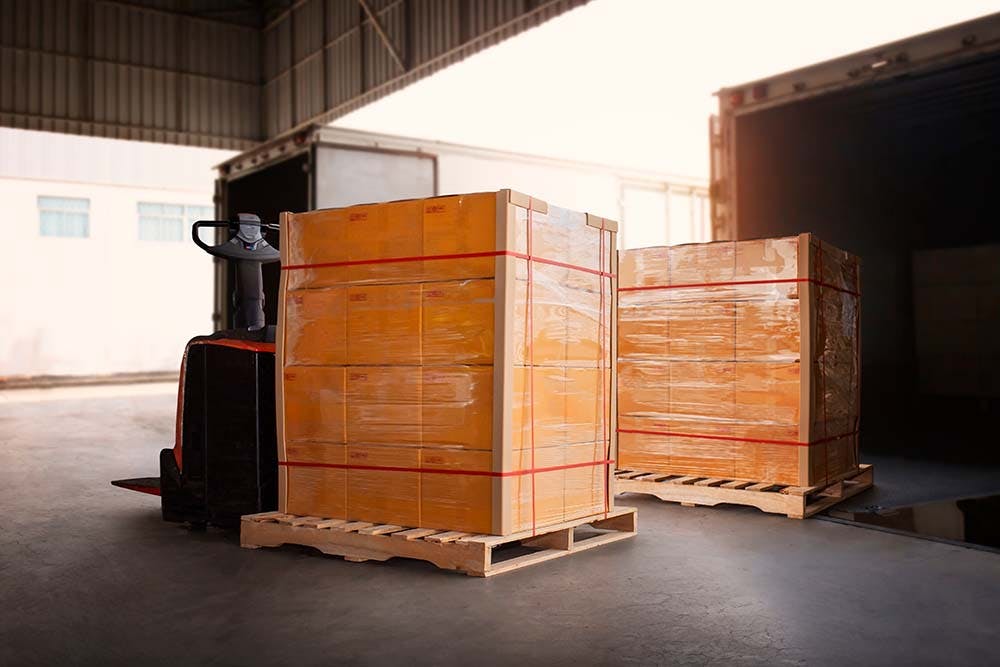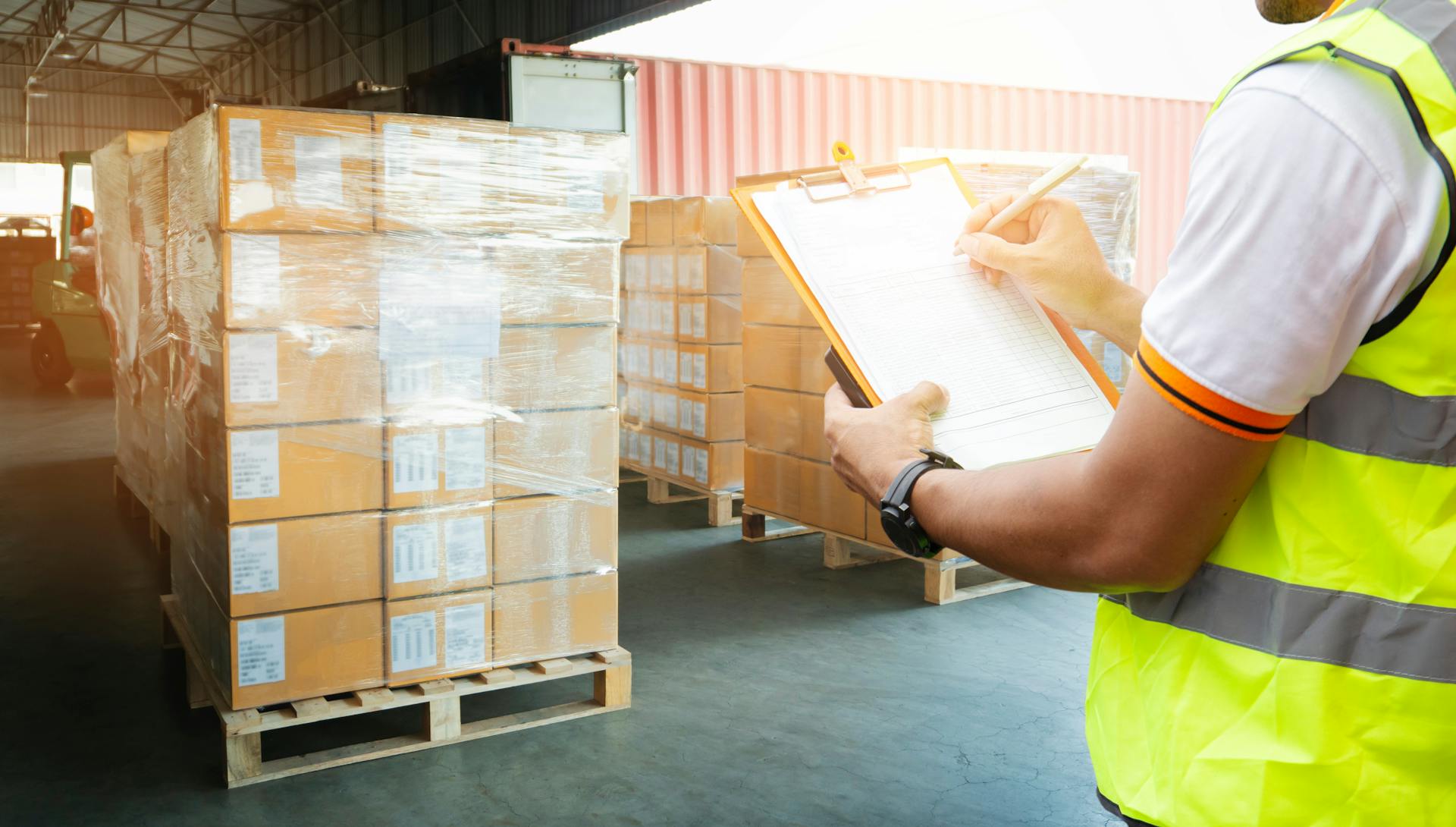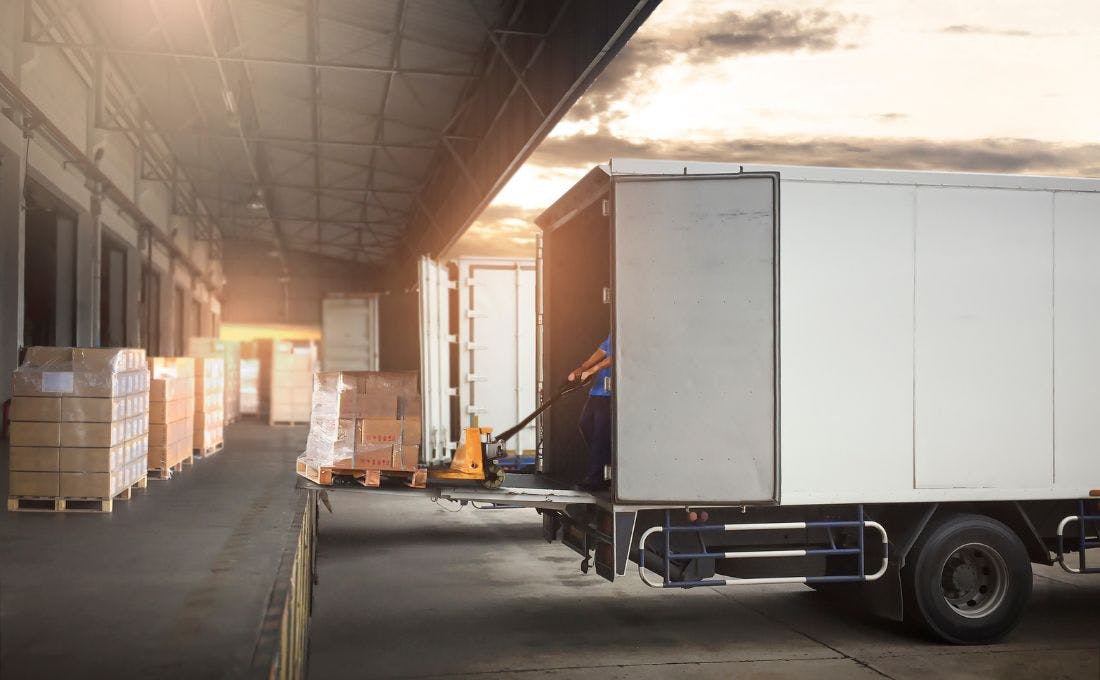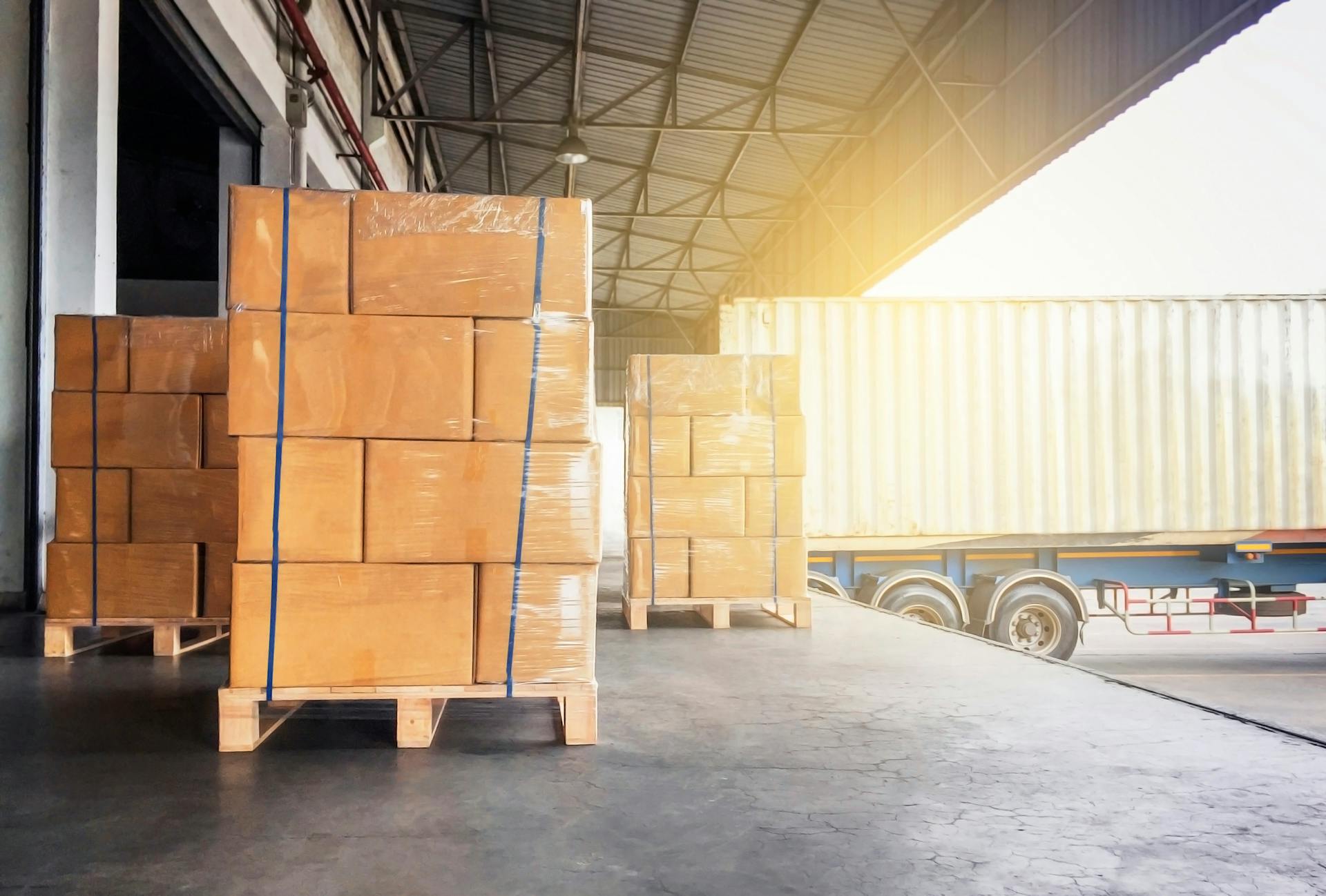Introduction
For the modern manufacturer, optimizing logistics and transportation processes is no longer a luxury but a necessity for maintaining competitiveness. Every inch of truck space and every minute of transit time counts. Maximizing truck capacity and streamlining load planning operations are critical strategies that can lead to higher efficiency, lower costs, and better sustainability.
Yet, many companies struggle with inefficient load planning, leading to rising delivery costs and missed deadlines. This isn’t just a logistical headache; it impacts the bottom line.
This strategy guide addresses these challenges head-on, offering key insights into the current state of load building and how cutting-edge technological solutions can address inefficiencies. We’ll explore how AI-driven load planning solutions can transform your operations. By automating and refining load planning, companies can optimize truck capacity utilization, minimize empty miles, optimize delivery routes, reduce waste, and streamline your supply chain.
Our exploration begins by presenting the current state of automated load planning and the persistent issues facing manufacturers. Then, we will dissect four distinct optimization scenarios to reveal the transformative advantages of carton, pallet, and load space optimization.
These technologies offer promising pathways not only to achieve cost reductions but also to align with sustainability goals and attain superior service standards. We will also showcase a compelling case study from Benjamin Moore, demonstrating the tangible benefits of data-driven load building. By implementing ORTEC’s AI-powered technology, Benjamin Moore surpassed its sustainability targets, significantly improved operational efficiency, and achieved outstanding ROI.
Advanced load building technologies can revolutionize your logistics operations, ensuring optimal delivery performance and empowering your business to lead in manufacturing innovation. By embracing these strategies, you'll unlock significant cost savings, enhance customer satisfaction, and minimize your environmental footprint.
The Current State of Automated Load Planning
New data reveals challenges in maximizing truck capacity, increasing delivery costs, and the need for AI-driven load planning solutions.
The results of our recent industry survey show that inefficient load optimization is a persistent challenge for many organizations, leading to higher operational costs and delivery inefficiencies. Consider these findings:
- 25% of companies identified poor load optimization as a primary contributor to rising delivery costs.
- 40% reported that their outbound trucks depart with less than 90% capacity utilization.
- 22% stated that inefficient truck loading directly affects their ability to meet last-mile delivery commitments.
Presented to more than 2,500 manufacturing, logistics, retail, and transportation professionals, the survey highlights how maximizing truck capacity is becoming a major priority, as businesses navigate fluctuating fuel prices, increasing demand for faster deliveries, and mounting pressure to reduce carbon footprint.
Organizations continue to struggle with key barriers to efficient load planning. The biggest obstacles to optimizing truck loads include:
x Inadequate load planning software
x Order processing delays
x Lack of real-time visibility into warehouse operations
The impact of these inefficiencies is considerable, resulting in wasted fuel, higher costs, and unnecessary environmental impact.
Despite these issues, many companies are still in the early stages of leveraging technology to improve load optimization. ORTEC’s findings reveal that while a quarter of organizations have successfully implemented AI-powered load planning solutions, a significant number are still relying on manual processes or outdated software.
With increasing adoption of automation and AI in logistics, businesses have a major opportunity to enhance efficiency, reduce costs, and streamline delivery operations by investing in advanced load planning technologies. AI-powered tools and real-time data analytics allow companies to maximize capacity utilization, minimize costs, and enhance overall supply chain efficiency.
Many companies are leaving money on the table due to inefficient load optimization. By utilizing AI-driven planning solutions, businesses can ensure better truck utilization, reduce empty miles, and improve delivery accuracy, ultimately leading to cost savings and greater operational efficiency.
How Can Carton, Pallet, and Load Space Optimization Add Value for My Company?
When engaging with companies regarding pallet and load optimization, our primary objective is to empower them to maximize pallet and truck utilization, automate planning processes, and enhance warehouse efficiencies. While these goals are pivotal, it is essential to recognize the broad impact of carton, pallet, and load space optimization across various processes.
By integrating optimization capabilities in the planning phase, companies can significantly enhance downstream activities, spanning supply, sales, logistics planning, pallet picking, warehouse layout, automation, staging, vehicle loading, safety protocols, unloading efficiency, and meeting customer-specific requirements.
ORTEC’s advanced algorithms and data analytics enable companies to navigate these complex variables and activities, facilitating the creation of optimized processes that yield rapid, superior results.
This approach supports informed decision-making and operational excellence, aligning with overarching business objectives.
In this guide, we explore four key areas where companies are leveraging ORTEC’s pallet and loading solutions, shedding light on the operational advantages associated with each application.

Optimizing carton, pallet, and load space significantly enhances efficiency and cost savings. We explore how load optimization technologies provide significant value and a competitive edge.
Maximize your logistics efficiency with carton, pallet, and load optimization. Discover the transformative impact of ORTEC’s optimization technologies on your business. Learn how to streamline warehousing, reduce costs, and improve sustainability.
Carton, Pallet, and Load Optimization Scenarios
Carton, pallet, and vehicle optimization adds value across your supply chain. Implementing optimization in one area supports subsequent processes, impacting operational efficiency throughout the organization. Here are four scenarios where companies have used these technologies to reduce costs and gain a competitive edge. Keep reading for more information on how they did it.
Intercompany, Demand-Based, and FTL Planning
Order Management

Multi-Stop Pallet and Load Optimization

Warehouse
Implementing optimization adds value across your supply chain. Optimizing one area supports subsequent processes, impacting operational efficiency throughout the organization.
Intercompany, Demand-Based, and FTL Planning
Optimizing truck utilization upstream, before order creation, brings substantial savings. A high degree of utilization can be achieved by not limiting planning based on predefined orders. Consider using an optimizer to maximize shipments based on demand, need-by-date, vendor managed inventory (VMI), or other priorities.
In one example, the optimization algorithm was given a list of products that needed to be shipped over the course of a few days with varying priorities. The challenge for this company is that they have a high variance in weight through a broad product range. For example, heavy peanut butter and canned soups loaded alongside pasta and cereals. The algorithm can balance these factors achieving high volume and weight utilization, across multiple transports, while assuring that the transports are within legal limits.
The optimizer tool calculates a more effective load, balanced in weight and volume – in just a few seconds. In the first model, it includes only Priority 1 items. In another, it fulfills the "must haves" and then mixes in Priority 2 items to fully utilize the truck space and improve efficiency.
Model One:
• Weight Utilization = 98.2%
• Volume Utilization = 87.5%
Model Two:
• Weight Utilization = 99.4%
• Volume Utilization = 90.3%
Order Management
Implementing pallet and load optimization during the order entry phase helps businesses improve processes and efficiencies in several areas.
Optimization enables sales teams and customers to make decisions on order quantities based on accurate utilization. Visualizing truck and pallet utilization provides a clear view of capacity. Shipping quantities can be decreased to avoid overloading or increased to reduce empty space. ORTEC’s loading algorithm may also be used to suggest additional product quantities to fill remaining space/weight. For instance, the optimizer identifies three additional items for a trailer load, with no resulting axle violations, creating a fuller and more efficient load.
Optimized shipments also add value through improved customer service and improved efficiencies in subsequent processes. For example, having a clear view of transportation requirements when an order is entered supports capacity planning for transportation, transport procurement, and warehouse processes.
Multi-Stop Pallet and Load Optimization
There are many goals to consider – some of which may conflict – to find the most optimal solution for packing pallets and loads, such as:
• Can all products be stacked on one another?
• What about individual customer requirements?
• Do certain products need to be held together or separated on a load?
• What is the best delivery sequence?
• Is the optimal truck size and type being used for the load and the customer?
• Will the truck or axles be overloaded?
• Can more products fit on the truck?
• Are the products staged efficiently for loading?
A pallet and load optimization solution automates the planning process while accounting for business rules and considering best practices from your experienced team members.
Warehouse
Using an optimizer for pallet and load optimization provides a sustainable way to produce optimal results in the warehouse.
In non-automated warehouses, a veteran picker works through aisles, placing products on pallets like a puzzle. Forklift drivers place pallets in a pre-stage area before reorganizing products for proper loading. In most cases, however, the picking and loading quality is not consistent and typically varies from employee to employee.
With an optimizer, the planning process is automated to create clear, visual loading plans for pickers, forklift drivers, and AWSs. Products can now be staged correctly the first time, with fewer product movements. New and seasonal hires have tools to build pallets and load trucks optimally using predefined business rules. Pallet and loading optimizers streamline the planning process to produce optimal, standardized, and sustainable results.
Unlocking Efficiency: The Advantages of Carton, Pallet, and Load Optimization Technologies
Using ORTEC solutions presents positive impacts across your supply chain operations. The cases above are only some examples of how optimizers have been implemented at companies. There are many more. The list below highlights the potential benefits achieved when optimizing cartonization, pallet building, and load planning processes.
✓ Cost Reduction: Decreasing shipments, reducing labor, streamlining planning, and supporting strategic decisions produce significant cost savings.
✓ Quality: Creating consistent processes improves consistency and reduces damage, while facilitating new strategies and planning innovations.
✓ Reporting: Gaining more visibility helps identify areas for improvement and enable more informed decision-making.
✓ Service: Optimizing standards boosts efficiency while supporting customer requirements, enhancing overall customer service.
✓ Sustainability: Lowering the number of trips and resources used through optimization supports corporate initiatives for environmental impact.
✓ Safety: Managing rules and guidelines ensures safer operations and fewer non-compliance fines.
Customer Case: Benjamin Moore
ORTEC’s Load Building solution provides AI-driven recommendations and data analytics to improve efficiency, reduce shipping and labor costs, and raise sustainability.
The Challenge: Optimizing Dynamic Load Building
Benjamin Moore, a global leader in paint and coatings, sought to enhance its load building and distribution efficiency. Committed to innovation and sustainability in manufacturing, the company aimed to optimize its truck loading and distribution processes from plants to distribution centers. The primary challenge was the dynamic nature of their operations, where products move directly from production lines to trucks, requiring real-time optimization. Lacking a robust system to maximize pallet and weight efficiency during shipments, they experienced under- and over-shipments, costly errors, increased costs, and diminished customer satisfaction.
ORTEC’s Value Proposition: AI-Driven Integration
To overcome these obstacles, Benjamin Moore partnered with ORTEC, implementing the ORTEC Load Building for SAP® solution. This certified SAP add-on provided advanced AI-driven recommendations and data analytics for optimizing carton, pallet, and truck loading. Seamlessly embedded within their SAP environment, ORTEC’s solution facilitated their unique staging process, improving pallet and load stability, maximizing truck capacity, and reducing transportation costs and carbon footprint. With these enhancements, Benjamin Moore benefited from ROIs within one year and improved both internal and external customer satisfaction.
Impact Across the Supply Chain
Partnering with ORTEC enabled Benjamin Moore to implement a comprehensive supply chain integration strategy, optimizing deliveries and refining supply chain operations. The goals included elevating customer satisfaction, driving sustainability efforts by minimizing shipments, and achieving cost efficiency. Key features of ORTEC’s 3D load building solution included automated load planning, flexible adjustments for variations, and enhanced load stability through optimized sequencing.
Tangible Benefits and Rapid ROI
The project yielded significant benefits, including ROI in less than one year. Benjamin Moore experienced increased customer satisfaction, improved fulfillment rates, and reduced labor and shipping costs. Furthermore, the optimized load building contributed to their sustainability goals by minimizing the number of required shipments. Post-go-live analysis confirmed the accuracy and safety of ORTEC’s solution, with the system flagging potential compliance issues.
Partnership and Long-Term Impact
The collaboration between Benjamin Moore and ORTEC resulted in a robust logistics solution, achieving desired outcomes that exceeded project goals. ORTEC provided exceptional support throughout the complex implementation, demonstrating a commitment to continuous improvement. Benjamin Moore lauded ORTEC’s approach, noting their exceptional support and resource allocation, which solidified ORTEC as a trusted partner.
We teamed with ORTEC to not only implement their load optimization software, but also to implement a comprehensive supply chain integration which load building was part of. The experience exemplifies the true meaning of a partnership.
Embracing the Future of Load Building
Effective load planning and optimization stand as pivotal elements for business excellence for manufacturers. In this e-guide, we explored the pressing challenges of modern load planning, from rising costs to sustainability demands. The data is clear: inefficient processes hinder operational success. However, the path forward is equally clear: leveraging AI-driven load planning solutions presents a powerful avenue for businesses to streamline operations, reduce delivery inefficiencies, and adapt to evolving market pressures.
By implementing advanced load building solutions, you can transform your supply chain with strategic optimization, from streamlined order management to maximized warehouse efficiency. Organizations that embrace innovative algorithms and data analytics see a multitude of benefits – including operational cost savings, enhanced customer service, improved sustainability, and safer transportation practices.
The Benjamin Moore case study vividly illustrates these advantages. Real-world results demonstrate the power of data-driven decisions, leading to significant ROI, enhanced customer satisfaction, and a reduced carbon footprint. Such success stories highlight the broader potential of data-driven optimization across manufacturing and logistics operations.
The future of load building is here. It’s about more than just filling trucks; it’s about intelligent, sustainable, and cost-effective operations and the transformative potential of technology in overcoming barriers like inadequate software, order delays, and insufficient operational visibility. Businesses poised to invest in these innovative solutions are well-positioned to lead the industry in efficiency, sustainability, and innovation.
Embrace these technologies to unlock your full potential and gain a competitive edge. Contact us to learn how we can help you optimize your logistics and drive your business forward.
Keep Exploring
Learn more about ORTEC's powerful load building solutions and how we’ll help you reduce costs and optimize efficiency.



